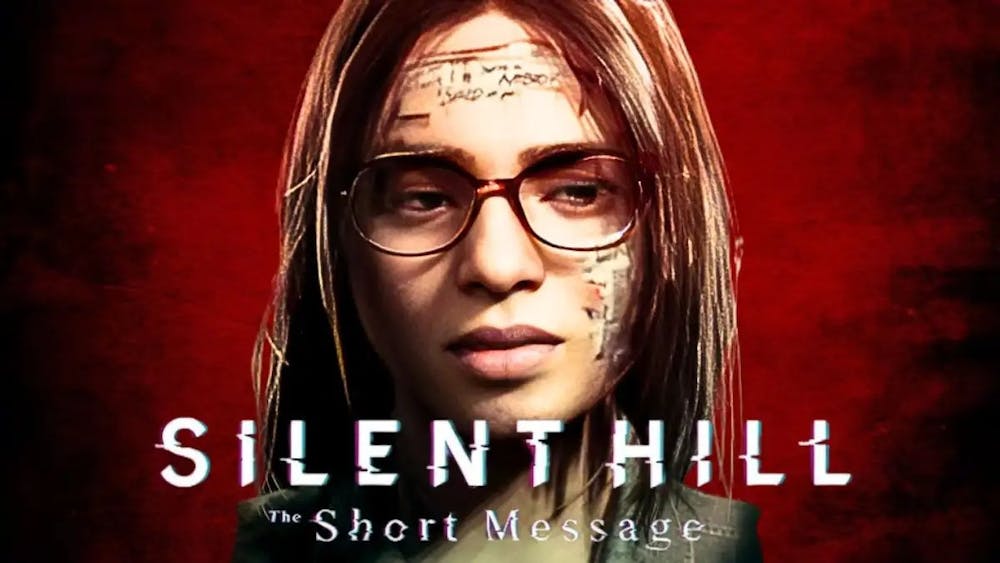The opinions and views expressed in this article are those of the author and do not reflect the opinion of Byte or Byte’s editorial board.
Warning: This game and the article you are about to read contain mention and discussion of extremely heavy topics and issues such as suicide, abuse, and death. If you are averse to such discussion or are dealing with any of the aforementioned issues yourself, please feel free to stop reading. And if you are experiencing or feeling any of the issues, we at Byte implore you to reach out to someone for help.
It has been over a decade since fans of the Silent Hill franchise received a new entry in the prolific series. Even longer since they had received one that felt equal in tone, message, and gameplay as the originals. There were no movies, no games, no word from Konami that Silent Hill would ever continue after the critical and commercial failure that was Silent Hill: Downpour. In 2014, a playable demo was released under the title P.T.—crafted by Hideo Kojima (Metal Gear, Death Stranding) in partnership with Guillermo del Toro (Pan’s Labyrinth, Shape of Water). This playable teaser was for a then-to-come game by the name of Silent Hills and what would have been the next mainline entry in the franchise. But, the game never came to fruition after some internal restructuring within Konami.
In October of 2022, Konami suddenly released a presentation video detailing the future of the Silent Hill franchise: several games, a sequel film to the 2006 cult classic, and remake of fan favorite Silent Hill 2. After this, very little news came out about the upcoming works. Then, on January 31 of 2024, during Sony’s Playstation State of Play, a gameplay trailer of Silent Hill 2 Remake was shown. But what many missed during this time was Konami’s stealth drop of Silent Hill: The Short Message; a short and free Silent Hill experience.
The Darkness That Lurks In Our Mind is Brought to Light
Following the format of the franchise, Silent Hill: The Short Message tells a fictional story with a real and important message that is conveyed through horrific personification of emotions and a rusting, terrifying setting. However, the game takes big leaps to try something new. The most notable? Unlike every other game, Silent Hill: The Short Message does not take place in the titular town of Silent Hill.
Set in the fictional, dying town of Kettenstadt, Germany, Silent Hill: The Short Message follows Anita (Jeannie Tirado) as she awakens in a rundown apartment complex called “Villa,” a graffiti hot-spot and infamous suicide spot among teenage girls. She is looking for her friend Maya (Anne Yatco), who is a popular graffiti artist under the name C.B. (Cherry Blossom). On occasion, Maya texts Anita, guiding her and telling her to “find it” but never replies to Anita’s texts. As Anita continues to search, she is haunted by flashbacks: memories of the online harassment she faced trying to be popular like Maya, voices of her past, and memories of meeting and getting to know Maya. Eventually, as she wanders through the decrepit halls, she is chased by a horrid monster—which we’ll call Cherry Blossom—through halls of harassing notes, rusting fences and barbed wire. In her escape, she goes to the roof—scared and still jealous by Maya’s popularity, even after death—and jumps.

Taken from Polygon
Rather than dying, Anita awakens back in the Villa and Maya’s texts continue to urge her to “find it”. Going back through the rundown halls, facing more flashbacks, Anita finds an unfinished art piece by Maya of her friend Amelie (Brenda Arteaga-Walsh). After their meeting, Amelie and Maya began to form a close friendship and Anita felt invisible. It drove Anita to jealousy and to withhold a letter from Maya pleading with Amelie for help, which she believed may have driven Maya to her death. Full of guilt, Anita heads to the roof for a second time and jumps.
She awakens a third time. The building is no longer the Villa, it is her old family home. Walking a repeating loop through it, Anita remembers the neglect and abuse she and her younger brother faced from their mother. And she remembers how it led to the death of her sibling. In a final escape from Cherry Blossom—born of her guilt and trauma—Anita finds an artwork of herself composed by Maya. She wasn’t invisible. Returning to the roof for the third time, Anita considers jumping, but Amelie pleads with her and stops her. Talking with Amelie, Anita is broken free from the Fog World and goes on to continue living her life.
The story of Silent Hill: The Short Message is far from subtle. In all honesty, it hardly seems to try. It is overt in its message, but I think that’s okay. The story of the game tells you what is happening—through okay acting and writing—and in some cases shows it to you. This game seems to be better suited to try and reach a teenage audience who are facing these kinds of problems. Teenagers who are constantly on social media, seeking attention yet feeling more alone than they ever could. Who face far more harassment nowadays due to the interconnectivity that smart technology grants us. But, at the same time, these same teenagers have the ability to channel their trauma—their pain, their guilt, everything—into beautiful works of art, just like Maya. The important thing to note is that there are people who care and would do everything they can to help others through whatever it is they may be facing.
A World That is a Nightmarish Waltz From the Past
The worlds of Silent Hill have always been a bit of a mystery to the audience. Are they real? Are they all in the protagonist’s head? Regardless of the answer—of which there are many, depending on the source—one thing is certain: they are gruesome and beautifully horrifying. The same goes for the creatures and monsters the protagonists face; beings manifest from their conscious, subconscious, or repressed thoughts, emotions, and memories and are twisted by the malevolent forces of Silent Hill—or, in the case of Silent Hill: The Short Message, a psychological syndrome. The man behind such iconic designs? Masahiro Itô, one of the founding members of Team Silent, the small, original group which created Silent Hill as we know it today.

Taken from Eurogamer
However, Itô had not been actively participating or working on Silent Hill games since before Team Silent was disbanded by Konami in 2005. While the monsters of Silent Hill games following Team Silent’s departure were still a horridly wonderful sight to behold, it was clear that something was missing. So, when Silent Hill: The Short Message released people withheld reservation on what any monster may look like in the game. But to the surprise of everyone playing the game, the sole monster—Cherry Blossom—was striking and managed to take something gorgeous and turn it into a nightmare. It was as the credits rolled where fans of the franchise were given another pleasant surprise. Returning to the franchise he helped to create was none other than Masahiro Itô, working on the design for Cherry Blossom as well as the environment itself, of which is very clear on subsequent play-throughs. The Otherworld sections of the game feel straight from the original games merging with the modern day, rusting, bloody, and dangerously sharp.
But Itô wasn’t the only one to return to the franchise they helped create. Alongside Itô was none other than Akira Yamaoka, the man responsible for the truly terrifying sound design and composition of the games.
Those who have played the original Silent Hill games remember walking through a dark corridor, wary of what may jump out at them in a moment's notice, when all of a sudden the dark hum of atmospheric sound is interrupted by a metallic screech or the sound of a metal pipe clanging in the distance. But this was not from a creature lurking around the corner in the distance, but rather from Yamaoka’s nightmarish composition. However, since 2009, Yamaoka has not had a major hand in the sound of future Silent Hill games. But, as with Itô’s sudden surprise return, Yamaoka reemerges as well, providing Silent Hill: The Short Message with a wonderfully tense and atmospheric soundtrack that is bound to make any fan of the series squeal in delight. The downside? Yamaoka feels as though he is holding back in this game, as though he is taking small steps to return to the dark sinister world and the sounds he had crafted for it decades ago.
An Execution That is but the Ashes and Ghost From a Historic Ancestry
Silent Hill: The Short Message was released only on Sony’s Playstation 5 system. With this, the game ran smoothly and without hiccup. It was a shockingly nightmarish sight to see and play through. But, as I had played through it, one thought just would not leave my mind: Konami just couldn’t let go of P.T.
When Kojima’s P.T. came out, people flocked to it and it became a crowning horror game without being a full fledged game. "Let’s Plays" were made, word of mouth formed, it was extremely popular. From that success, many games tried to emulate its atmosphere or gameplay of looping in the same place over and over, forced to find the changes with each loop. And after Kojima and Konami broke up, the playable teaser was promptly taken down from the Playstation store, never to be brought back out or made available ever again. But, the lasting impact of the game was so large that Playstation 4s were being sold at egregious prices just because they still had the teaser downloaded. P.T. was a gamechanger and became a historic landmark within the gaming community. So, surely Konami wasn’t just gonna let it die, right?
Well, they definitely didn’t, but in the wrong way—and one that felt like a slap in the face to fans. Most who played or watched through P.T. hoped beyond hope that Konami would finally give them the game they were promised with the small teaser. But no word came. Then, Kojima began his own production company and began teasing his first game: a collaboration between himself, Guillermo del Toro, and Norman Reedus. Speculation grew. Could this be the game? All the pieces were in place. But no, it was not. And from that, nothing more came to pass.
Now, a decade later, Konami gave us the first Silent Hill game of many to come—I am not counting Silent Hill: Ascension—in Silent Hill: The Short Message. Upon opening the game, what are fans met with? First person point of view, small enclosed building, a looping story mechanic. Worst of all? The section of the game at the end, where the player is in Anita’s family home is almost directly the same. Fans walk down a hall, turn right, walk down the hall to the door at the end of the corridor, loop. The cherry on top was the child screaming and shaking the refrigerator. Hmm… where have I seen that before? Oh yeah… I remember… P.T.
However, this isn’t to say that Silent Hill: The Short Message is directly a copy of P.T., or that it is all bad. In fact, the game does try to be something unique and different, but built upon the backbone of what Silent Hills could have been. The chase scenes in Silent Hill: The Short Message are truly terrifying, making my heart beat out of my chest as I turn the corner and suddenly come face to face with Cherry Blossom, whom I thought was behind me. There are several more areas to explore in this game than there was in P.T. as well. Each area was unique and dynamically lit as well as contributing to a story rather than just teasing a game that never came out. Most notable of these moments was the sequence in the school. Reminiscent of Outlast 2, the player traverses through the school to obtain answers. And at one point the hall of the school twists into a spiraling, warped corridor.
However, due to the length of the game being roughly the same as P.T. there wasn’t much time to truly get to know each area well or for them to feel fully fleshed out. The quality of the performance truly teeters between being a reskinned attempt or something worthwhile. But, the graphics were amazing and looked quite good. And the use of real recorded footage helped to ground the players—though the lip syncing was skewed at times.

Sources:
Konami, IMDb, Xbox, IMDb, PlayStation, IMDb, IMDb, IMDb, Steam, Konami, IMDb, IMDb, IMDb, IMDb, IMDb Ascension, Steam
bazicenter, Polygon, Euorgamer
Contact Aaron Picklesimer with comments at ampicklesimer@bsu.edu.





